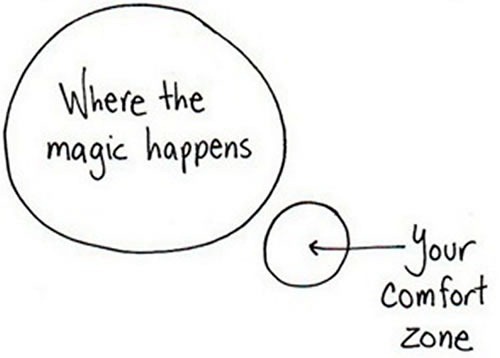 You know it and I know it: PAIN IS NO FUN!
You know it and I know it: PAIN IS NO FUN!
If given the choice, it would be very difficult to turn down a life of a pain-free existence, right?! However, there is no magic healing wand – sorry! And, this may sound nuts, but our pain can offer us powerful and often profound life lessons if we allow ourselves to be receptive to its teachings.
Whether pain is physical or emotional, it’s in our DNA to resist and avoid pain (consciously and unconsciously).
We are born with a built-in mechanism to alert us when something hurts. And kind of like a fire alarm, when we hear it/feel it – we know something isn’t right and we need to evacuate immediately. This is thanks to the protective nature of our central nervous system, which keeps us safe and on the lookout for danger (yet is also sometimes a little like a smothering over-protective mother). However, we have some power over our central nervous system, the ability to change how we respond to the alerts of our central nervous system, and the ability to change our relationship with our pain.
Here are a few ways to work with our pain, instead of working against it…
1) Get Present: In order to make any change in how we relate to ourselves, we must first get present to what’s happening in each moment. Checking in and asking ourselves what is actually happening (and get specific with the nuanced sensation of the mind and body), not what happened yesterday or what we think we will feel tomorrow, is a powerful tool in working with our pain.
2) Remove Negative Labeling: If we are labeling our experience in ways that are negative, then we are potentially perpetuating pain. For example, if we repetitively label our pain like this: “This pain is unbearable…ouch, ouch…I can’t handle it…” our bodies will likely believe our brains and make it so, even when we aren’t feeling the unbearable-ness of our pain. Labeling often shuts down the opportunity for exploration, which then doesn’t allow us to be present to our moment-to-moment experience, which is always shifting (see #1).
3) Breathe Consciously: Conscious breathing is the language of our central nervous system. Deep, slow breaths through the nose can sends signals to our central nervous system that all is ok and safe in the body. These breaths can further help to calm our experience of pain. Think of conscious breath like medicine for the body. In moments of discomfort, we can use the breath to soften the pain and help ourselves to calm the drama in our minds about the sensation of the pain.
4) Halt Anticipation: If we have a potentially painful experience coming up in the future (ie: root canal, physical therapy for an injury, or an emotionally charged experience), our tendency might be to anticipate the pain we are going to feel. However, we have no idea how we are going to feel, because the event hasn’t happened yet. And even if we have had an event just like it in the past, our experience this time isn’t guaranteed to be identical. Shake off the anticipation and go back to presence (see #1).
5) Appreciate our Ability: Our bodies are pretty incredible when you think about it. The fact that our bodies sometimes “know” things before our minds do (think of touching a hot stove – the ouch comes before we realize what we have done) and that our bodies alert and protect us from danger is all pretty amazing. As strange as it may sound, when pain arises, if we can honestly and wholeheartedly thank our bodies for successfully alerting us, we open ourselves up to a place of receptivity (which usually helps to alleviate some pain).
6) What We Resist, Persists: In considering #5, being receptive is essential in pain management. If we resist our pain physically and emotionally, it actually persists more intensely. Think about a winter day, when we brace our face and tense our shoulders against the harsh winds, the cold only feels worse and more painful. When we soften our faces and drop our shoulders down our backs, the cold may still penetrate, but the experience of it is much less intense than when we go into resistant, protective mode.
7) Celebrate Small Wins: Change and healing takes time. What often keeps us motivated and optimistic is seeing results. Each time we notice progress, no matter how minimal, it’s important that we affirm it. If yesterday was a day of so much back pain that we could barely take a step and today we are able to walk from the couch to the front door, that’s progress (even our couch is very close to our front door!). See it, name it, celebrate it.
8) Remember Resilience: We, as human beings, are built to be incredibly robust. We have bodies that can (often) heal themselves. We can withstand a lot of painful physical and emotional traumas, often emerging even stronger and more resilient than we were in the first place. When we are healing pain, it’s important that we trust in our resilience and that we remember we are hardy beings that are built to last!
Here’s to being built to last!






